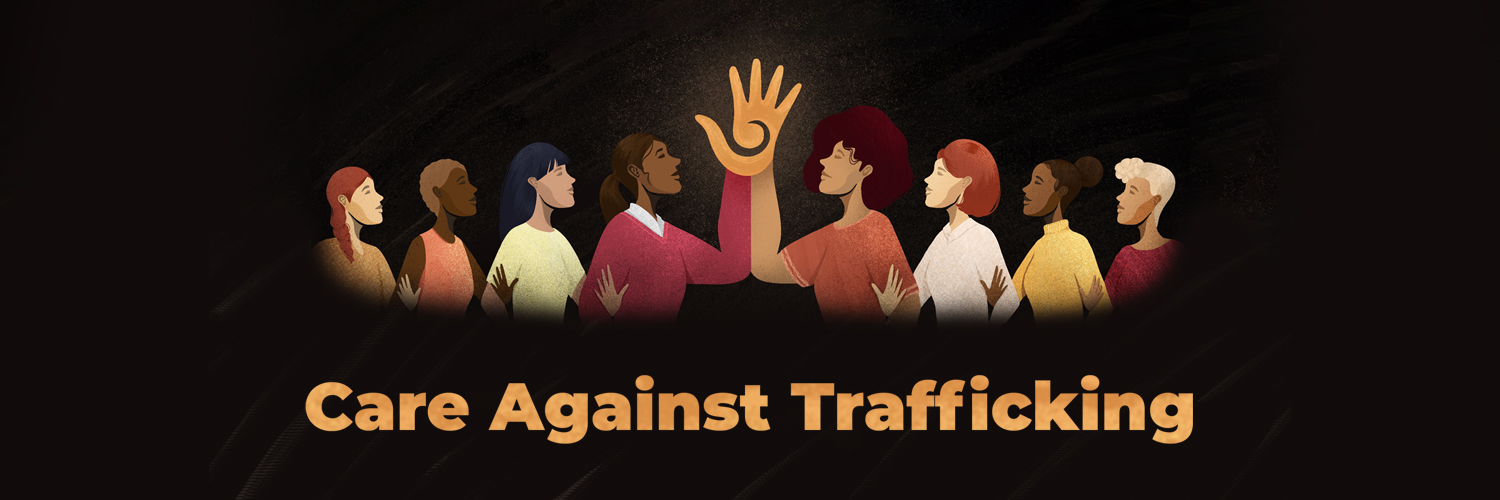Every country in the world is affected by human trafficking, whether as a country of origin, transit, or destination for victims. Traffickers the world over continue to target women and girls. The poor and the vulnerable are most at risk. The vast majority of detected victims of trafficking for sexual exploitation and 35 per cent of those trafficked for forced labor are female. Conflict further exacerbates vulnerabilities, with armed groups exploiting civilians and traffickers targeting forcibly displaced people.
COVID-19 has amplified trafficking dangers. Loss of jobs, growing poverty, school closures and a rise in online interactions are increasing vulnerabilities and opening up opportunities for organized crime groups.

The crisis has overwhelmed social and public services, impacted the work of law enforcement and criminal justice systems, and made it harder for victims to seek help.
And yet in these difficult times, we see the best of humanity: frontline heroes, men and women risking their lives and going above and beyond to provide essential support for human trafficking victims.
The United Nation’s announced this year’s theme for the World Day Against Trafficking in Persons highlights the importance of listening to and learning from survivors of human trafficking. Survivors are key actors in the fight against human trafficking. They play a crucial role in establishing effective measures to prevent this crime, identifying and rescuing victims and supporting them on their road to rehabilitation.
Many victims of human trafficking have experienced ignorance or misunderstanding in their attempts to get help. They have had traumatic post-rescue experiences during identification interviews and legal proceedings. Some have faced revictimization and punishment for crimes they were forced to commit by their traffickers. Others have been subjected to stigmatization or received inadequate support.
Learning from victims’ experiences and turning their suggestions into concrete actions will lead to a more victim-centered and effective approach in combating human trafficking.
~ submitted by Karol Brewer, CAAC
Human trafficking does not only happen in big states, or big cities. According to Polaris Project statistics, California, Texas, Florida, and New York have the most trafficking cases — no surprise, considering these are densely-populated states bordering water. But Ohio, Georgia, Michigan, Washington, and Pennsylvania round out the top ten, which confirms that just because you don’t live in an obvious “hotspot” state doesn’t mean that trafficking isn’t a problem close to home.

WHAT CAN YOU DO TO HELP?
- Ask your hotel to become part of The Tourism Child-Protection Code of Conduct. ECPAT-USA has made it easy with the printable letter located on their website.
- Save 888-373-7888 in your cell phone.
This is the number of the hotline at the National Human Trafficking Resource Center sponsored by Polaris Project. The line is staffed 24/7, with multiple language interpreters available. Victims can also text BEFREE (233733) to be immediately connected to the NHTRC.
- PRAY for all Trafficking to end.
- Shop smarter — use the U.S. Department of Labor’s list of goods commonly produced worldwide by child labor or forced labor to determine whether the things you buy are ethically harvested/manufactured. Visit SlaveryFootprint.org, a website made in conjunction with the U.S. Department of Justice, for an eye-opening look at how many of the things we use every day come from a supply chain fraught with forced labor.
- Volunteer locally. The Human Trafficking Hotline has an online Referral Directory where you can enter your location and find the anti-trafficking organizations and resources closest to you.
- Raise your voice for the voiceless: contact your elected officials (local, state and federal; find them all here) and ask them — relentlessly, if necessary — what they are doing to address the issue of human trafficking. Then offer suggestions!
- Spread the word. Be vocal, both in person and on social media, about this cause! The more people are made aware of the facts and ways to help, the more likely they are to recognize the signs — and help accordingly. The Department of Homeland Security’s Blue Campaign has an online document library with printable cards, posters, pamphlets, and infographics to help raise awareness.
- Keep yourself informed. The U.S. Department of Justice’s press room has a constantly-updating database of the latest press releases pertaining to human trafficking. You can set up a Google alert to ping your email when a new article about human trafficking hits the web. You can also see breaking news on the Office on Trafficking in Persons (OTIP) website’s news feed.
- Encourage your workplace to provide pertinent, specialized training. Anyone working in the healthcare industry (including social workers and behavioral health professionals) can take SOAR training. Those in law enforcement and criminal justice can access training through the Office for Victims of Crime Training & Technical Assistance Center (OVC TTAC).
- Encourage your child’s school to adopt protocols for anti-trafficking; your district can find a ton of resources, plus a sample protocol, via the National Center on Safe Supportive Learning Environments.
- Use your skills for a good cause. No matter what you do professionally, or what you’re talented at, there’s some way to use your strengths. Do you provide a service that you or your employer could donate “pro bono” to victims of trafficking?
Thanks to the Weekly Updates of Guadalupe Province for this article.

